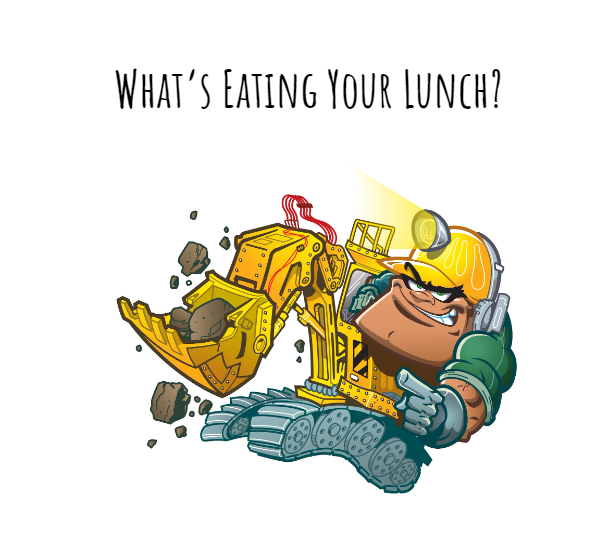What's Eating Your Lunch?
What’s Eating Your Lunch? The Question That Changed Everything
The coffee was still steaming in the crisp mid-morning mountain air of southern B.C.’s Elk Valley when General Supervisor Clint started his rounds at the Teck Resources flagship coal mine. It was that first settled hour just after shift change when the day crew was settling in and the production report from nightshift had been reviewed and distilled into a list of must-see stops on his morning pit tour.
See, Clint had a routine – check the boards, scour the production report, but most importantly, get out into the field where he could look his shift supervisors in the eye and ask the question that separated the good from the great.
I remember sitting next to one of his supervisors the first time I heard that question. I was a deployment specialist tasked with teaching shift supervisors the latest Race21 digital innovations designed to augment their shift performance with technology.
I remember the radio crackled with “Chris, can you meet me on the south spoil?” so we climbed into Chris’s pickup for the short drive to where Clint was waiting. The morning sun was cutting through the mountain haze as we pulled up to find Clint standing beside his truck, hand on hard hat blocking the sun, watching the steady parade of haul trucks dumping their loads. I checked the SIC (Short Interval Control) sheet, The numbers looked solid – tonnage was flowing, equipment was moving, no obvious problems visible to us on the supervisor app.
Chris rolled down his window and called out: Morning, Clint.
Clint responds with “Just jump out of your truck for a minute”
We get out and climb to the top of a nearby berm where we could look down on the dump dozers taking a steady flow of trucks on the spoil below.
Clint turns to Chris and says – what do you see happening here Chris? – what’s eating your lunch today?
That’s when it hit me. While I’d been focused on teaching supervisors how to use digital dashboards and analytics software, Clint had been teaching them something far more fundamental: how to actually SEE what I now call the productivity predators. He was actively teaching them how to think beyond the green lights and acceptable percentages to understand what was really happening beneath the surface of “The Numbers.”
Clint proceeds to highlight a handful of minor inefficiencies with dumping layout and suggested some ways to decrease the relatively minor wait times even further, Chris acknowledged his advice, made the changes on the spot and we departed.
But that moment on the south spoil changed everything for me…How i wish i had thought of this style of teaching sooner in my own career, i could have been a better mentor to my own supervisors – either way i feel fortunate to have been exposed to this way of evaluating systems.
The question for you is simple: When someone asks what’s eating your lunch, do you know the answer?

